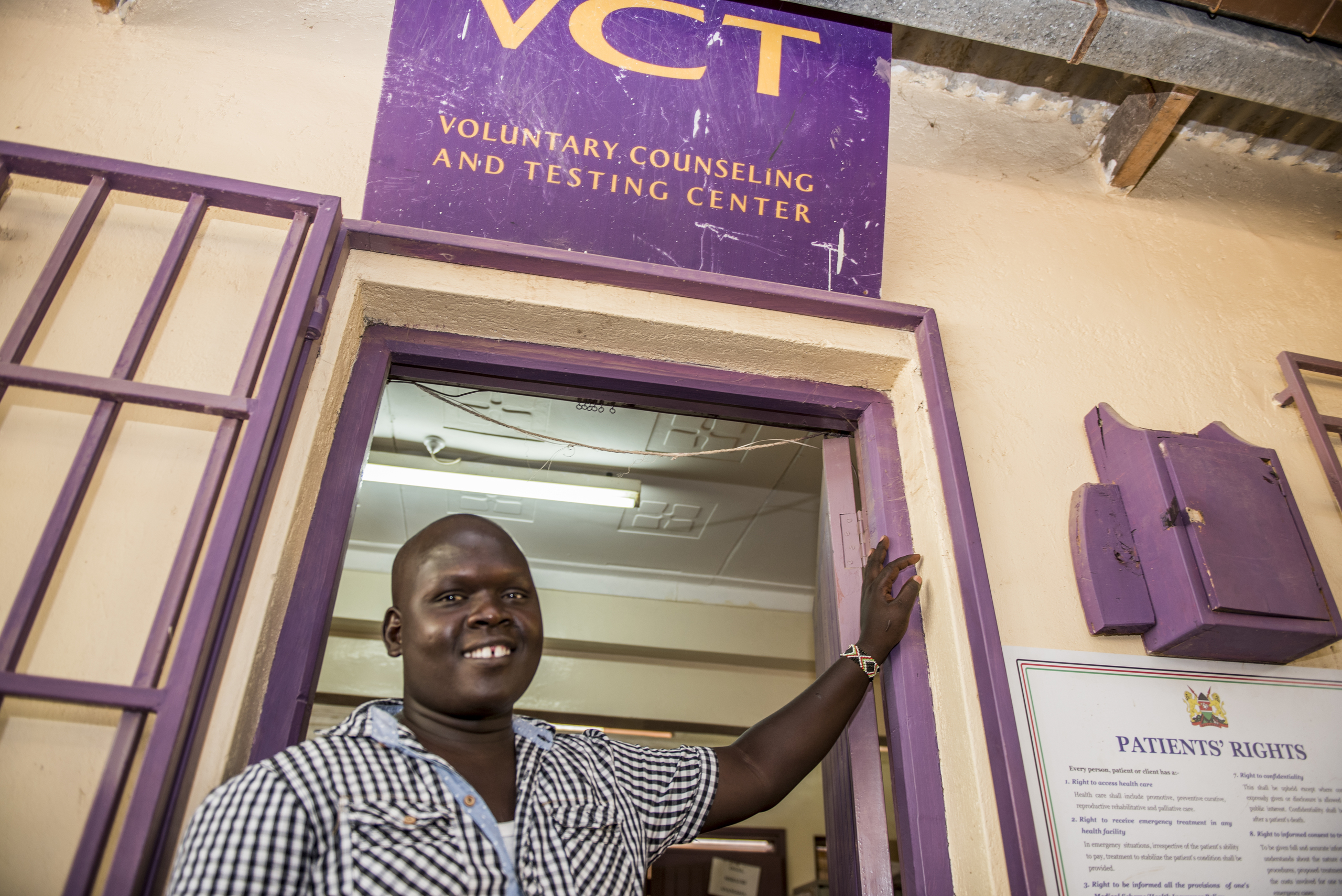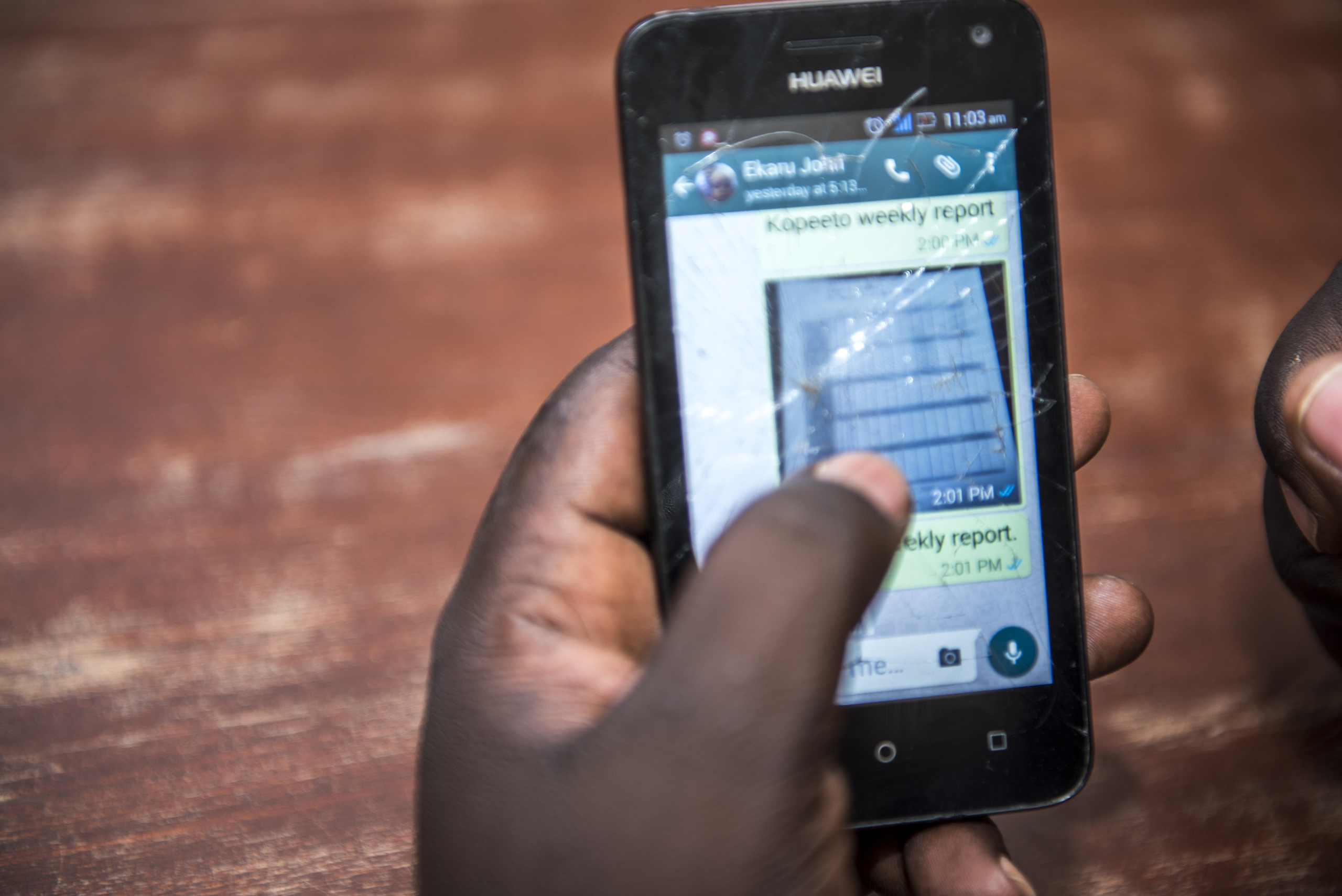Turkana, Kenya’s largest county, juts out of Kenya’s barren northwest into Uganda, South Sudan, and Ethiopia. Swaths of the county are regularly beset by drought, flash floods, and bandits. The infrastructure is poor, with the cratered tarmac on some roads dating back 50 years, making travel between settlements long and perilous. The Internet is nearly a myth out here: email messages stall out; phone calls fail to connect.
This environment is challenging for public health partners working to end HIV and AIDS. In the past, HIV test kits and antiretroviral medication frequently ran low at far-flung locations. Patient data painstakingly entered into paper ledgers were rarely, if ever, analyzed to identify service gaps and strategize improvements. Resupplying facilities and addressing clinical issues happened only after significant delays.
In response to this reality, the Elizabeth Glaser Pediatric AIDS Foundation (EGPAF) recently turned to social media to strengthen Turkana’s health network. Teams throughout the county now share data and ideas through WhatsApp, a free mobile messaging app.
WhatsApp’s popularity has skyrocketed in recent years, particularly after its acquisition by social media giant Facebook. In February 2016, there were 1 billion reported active WhatsApp users globally. The platform supports 53 languages with 1.6 billion images and 250 million videos shared through it each day. While most people use WhatsApp to keep in touch with family and friends, EGPAF and Kenya’s Ministry of Health are using it to keep medical and monitoring records in Turkana up to date.

“It was a strategy that was devised by the EGPAF office,” says Joseph Ekeno, the HIV testing services (HTS) supervisor at the Lodwar County Referral Hospital. “You never have a problem with the cellular network using WhatsApp. Even when the network is slow, you can use WhatsApp.”
WhatsApp bridges the information gap, connecting field officers to headquarters and transmitting reports to the Ministry of Health. This has reduced the reporting cycle from one month to one day, allowing program managers to more effectively address data or health service delivery issues.
“Basically we have various groups, even technical working groups set up on WhatsApp,” says Ekeno “It is purely for work. Whenever there is information that I need to pass to [HTS counselors], I can do it through WhatsApp, quickly. We are also able to efficiently relay CME [continual medical information] to health workers so that they can constantly improve.”
“Because of distance, we don’t meet in person regularly,” says Ekeno of his team. “Maybe we meet once in a month … but before the month elapses, we need certain types of information from those people. In that case, there is a template that [team members] fill with data. Someone takes a photo of the report and sends to us through What’s App. Then we print it out, we key it into our database, and I send the information to the M&E (monitoring and evaluation) officers at the EGPAF office.”

“As an HTS provider, you are actually able to report the number of patients you test in a day, and it becomes a way to monitor the program” and make corrections and improvements, says Ekeno.
“The reports are very important in terms of the decision making,” agrees Jonathan Longi’ti, EGPAF’s service delivery officer based in Lodwar. “You cannot make decision without reports, and if you wait to make decisions until the month’s end you may miss opportunities. For us to improve the program, we have to know the data. Are we doing well in terms of testing everyone? Are there issues in terms of staff or workload?”
“With the information sent through WhatsApp, the office can easily identify a gap and make sure that the gap has been rectified—for example deploying another person to a facility or making sure that an HTS counselor has all of the supplies that are required.”
In a region where travel by foot or by camel is common, social media is shortening the kilometers and ensuring that every member of every family has the opportunity to be tested for HIV and be linked to care, if needed.
Improvements in mobile platforms and other technology-based health solutions are increasing and sustaining the momentum to finally end AIDS.
EGPAF works in Turkana County, Kenya, under the Pamoja Project, which is funded by the U.S. Centers for Disease Control and Prevention (CDC) through the U.S. President’s Emergency Plan for AIDS Relief (PEPFAR). The Pamoja Project seeks to strengthen management, oversight, and implementation of high-quality, comprehensive, and sustainable HIV services in Kenya. The project focuses particularly on regions where HIV prevalence is high or where populations are underserved by health services.




